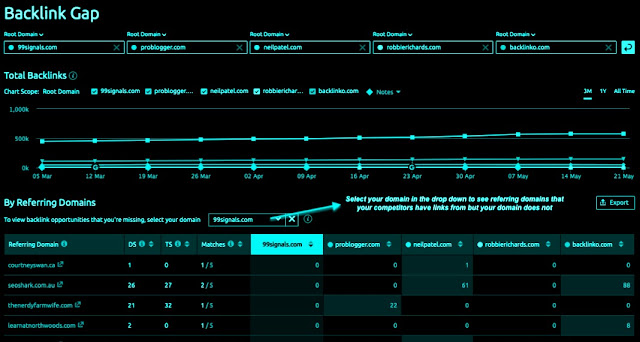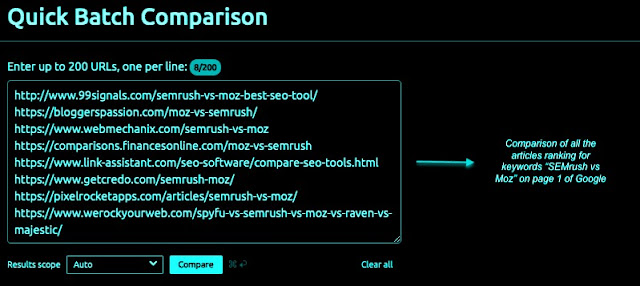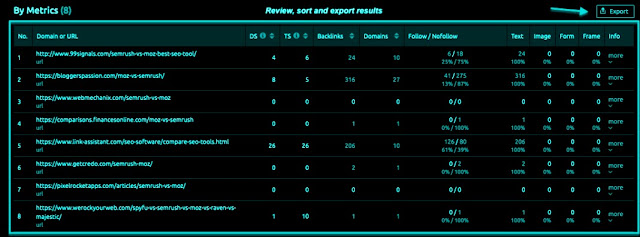SEMrush Competitors survey
SEMrush Competitors
You can learn a lot from your competition. Especially if you are a marketer.
Competitive analysis can help you gain insight into the strategies working for your competition so that you can improve on them to adopt them and gain an edge.
The first step in the competitive analysis is to identify our current and potential online competitors.
It is important to understand that the online competition scenario is very different from the regular brick-mortar concept of competition. This is where tools like Seemurus can not only help identify your nearest organic competitors but instead can collect data that can help you develop a strong marketing strategy for your business.
In this article, we will show you how to take advantage of various tools within SEMrush to conduct competitive analysis and can help you create an online marketing strategy that will perform better than your fiercest competitors.
To get more profits from this article, you will need an active SEMrush subscription. If you do not yet have a SEMrush account, you can get 14-day free access to SEMrush PRO by clicking here.
1. Identify your competitors with organic research using SEMrush competitors
The first task is to identify their organic competitors. These are the domains that are sharing search engine real estate with your domain for all important keywords.
To get started, log in to your SEMrush dashboard, enter your domain in the search bar and select 'Organic Research' in the drop-down. After this, click on 'Rival' to see a list of sites that rank for organic keywords similar to your domain and therefore, these keywords compete to compete for traffic.
2. Compare your domain's keyword portfolio to your closest competitor with keyword gap tool.
Within the SEMrush, the keyword gap tool allows you to add up to five domains and compare different types of keywords (organic, payment, or PLA keywords).
To get started, go to Gap Analysis -> Enter the keyword gap and the five domains you want to compare. You can use the data from the Organic Research Comptroller Report to identify the domains that share the same keyword rank similar to yours.
Next, select the keyword type. You can compare Organic, Payment, and PLA keywords between domains. Next, select the intersection type next to each domain by clicking on the wane diagrams.
The type of tamper determines which keywords the tool will offer for you. The type of tampering can tell you something different about standing within the competition. For example, "All keywords" give your competition a complete overview of all the keywords that get your traffic. Similarly, "general keyword" lets you see keywords where both websites are ranked.
Once you select the keyword type and intersection type, you can start the tool by clicking the 'Go' button.
To dive deeper into the data, use the available filters. You can add filters for words to compare keywords around a specific topic. By using these filters, you can be more specific and find gaps where you should take action.
3. Find new link building opportunities with the backlink gap tool
Link building is one of the most challenging aspects of SEO and the backlink gap of an instrument such as SEMrush can make life easier.
With Backlink Gap Tool, you can analyze backlink profiles of up to five competitors. This data can be used to identify unused link building opportunities.
To get started, go to Gap Analysis -> Enter the backlink gap and 5 domains you want to compare. If you want to look back on the backlink opportunities you are missing, then enter your own domain and then enter your four closest competitors. Once again, you can get this information from organic competitive reports. After entering your opponent's domain, press the green button and let SEMrush populate the data for you.
Backlink Gap Tool will return with a graph and a domain that shows a comparison between backlinks profiles of five domains. You can quickly see that the trend is creating the new backlinks with the trend graph on the top.
Now it's time to identify unused link building opportunities for your domain. This means that we need to look for referencing domains with links to competitors but not your domain. To view this data, select your domain in the drop-down menu above the table.
These websites can be your next link building goal because they are connecting with your competing sites, but not yours.
4. Compare 200 domains at once with Quick Batch Comparison Tool
The Quick Batch Comparison Tool is an easy-to-use tool that can help you compare your backlink profile with many competitors to find link building opportunities and guess how far you (or Forward).
But you must be thinking. What is the difference between backlink gap and quick batch? There is a lot of scope for the quick batch tool. While Backlink Gap Tool works to compare the scope of domain 6, this tool helps you compare 200 URLs from different websites.
To use this tool, head for Gap Analysis -> Quick Batch and enter 200 URLs (one per line) in the box at the top of the report. SEMrush will come back with data indicating how many backlinks and referencing domains each URL points to.
In addition, the quick batch report will have the following metrics for each URL:
- Domain Score and Trust Score (similar to Socks Domain and Page Authority Score)
- Number of backlinks
- Number of referencing domains
- Number of follow-ups and no follow links
- Number of text, image, look, and frame links
- Number of government, educational, .com, .net and .org links
- Number of referencing IPs
5. Uncover your competitors' social media activities with social media trackers
Social Media Tracker is a tool within SEMrush that lets you see the overall performance of your competitors' social media profiles.
Essentially, you can use this tool to compare your basic presence with the social profile of your competitors on three basic metrics: viewer, activity, and engagement.
To get started, go to your project dashboard and click the "Set Up" button under the Social Media Tracker. This configuration window will open where you will need to connect to your social accounts (Facebook, Twitter, YouTube etc.).
In the next step, you must enter the domain of your competitors. You can add up to 20 contestants. Based on the social network you have connected, SEMrush will automatically populate this data for you.
Once you've entered the domain of all your competitors, then press the "Start the Social Media Tracker" button.
In just a few seconds, Seymour will come back with an overview report which shows the size, activity, and engagement of the selected company's viewers on each channel. Select the data range that you want to analyze.
This figure will tell you where your opponent has the largest audience, where they often post, and where they get the highest engagement.
Then, scroll down to the Top Content section to see the most attractive posts of your competition on the given time range. You will see their social media posts which get the highest engagement.
And finally, scroll down further to reach the "Comparison with Competition" graph. Here, you can compare your social presence with your competitors on three metrics: viewer, activity, and engagement.
Change between comparison with viewers, activity, or engagement with the title at the top left. And then choose to sort by the total number, change, or increase (%) in the top right. You can also add and remove any social network from this data with the blue and red sections below the graph.









Comments
Post a Comment